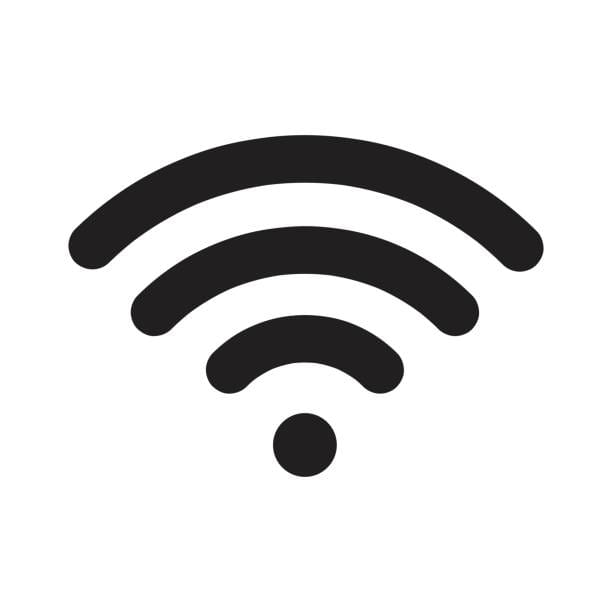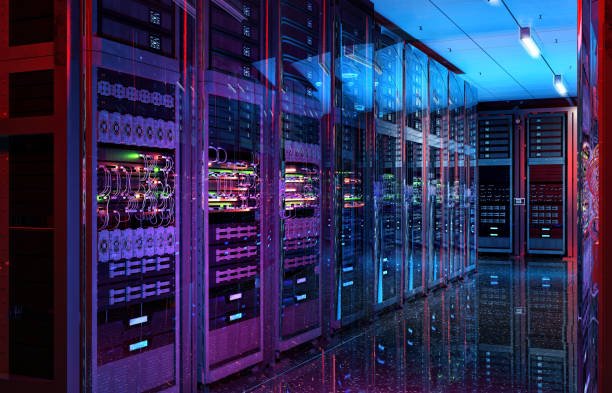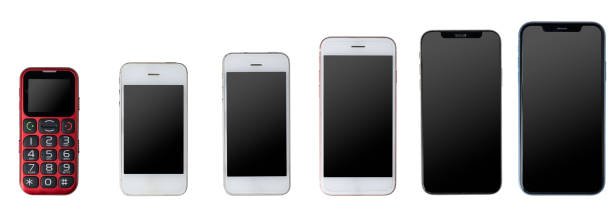The café smells of roasted coffee beans, a warm hum of conversation floats through the air, and your laptop glows invitingly in front of you. You notice the little icon on your screen — that comforting set of curved bars — and it beckons: “Free Wi-Fi.” You click, and in seconds, you’re online. The world is at your fingertips. Emails are checked, messages are sent, documents uploaded. But unseen by your eyes, something else is happening. Somewhere within range, someone could be watching — not you, but the silent data streams flowing between your device and that invisible access point.
Public Wi-Fi is one of the great conveniences of modern life. Airports, coffee shops, hotels, libraries — they all offer it, and we’ve learned to expect it. It’s as natural as electricity in the wall sockets or water from the tap. But unlike those utilities, Wi-Fi is not always safe. The very openness that makes it so easy to connect also makes it an ideal hunting ground for cybercriminals.
The risks are not theoretical. Cybersecurity reports are filled with stories of stolen passwords, hijacked bank accounts, leaked personal photos, and even intercepted business secrets — all because of an unsecured wireless network. Public Wi-Fi is like a public swimming pool: it may look inviting, but you have no idea what’s in the water.
The Nature of the Threat
To understand why public Wi-Fi can be dangerous, it helps to know what’s happening behind the scenes when you connect. Your device — whether it’s a laptop, phone, or tablet — sends packets of data over the air to a wireless access point, which then forwards them to the internet. In a secured home network, those packets are encrypted and the access point is under your control. But in a public setting, the access point could be configured in ways you can’t see — or it might not even belong to the business you think it does.
In many cases, public Wi-Fi networks lack proper encryption. This means your data travels in a form that can be intercepted by anyone with the right tools — tools that are neither expensive nor difficult to obtain. A hacker could be sitting just a few tables away, capturing everything you send and receive: usernames, passwords, credit card numbers, even the content of your messages.
There’s also the problem of man-in-the-middle attacks. In these scenarios, a cybercriminal positions their device between yours and the legitimate network, relaying and sometimes altering the communication without your knowledge. It’s like having an eavesdropper who not only listens but can also whisper in fake responses.
Then there are evil twin networks. These are rogue access points set up to mimic legitimate ones. You think you’re connecting to “Cafe_Free_WiFi” provided by the coffee shop, but in reality, it’s “Cafe_Free_WiFi” set up by a hacker sitting nearby. Once connected, your traffic flows through their device first — and they can capture or manipulate it at will.
Why the Danger Persists
Public Wi-Fi has been around for decades, and the risks have been known for almost as long. So why are people still falling victim to its dangers? Part of the reason is psychological. Humans crave convenience, and Wi-Fi offers instant gratification. We’re wired to seek efficiency in our daily lives, and free, no-login, open internet access feels like a gift. The risk feels abstract compared to the tangible benefit of getting online immediately.
Another reason is ignorance. Many people simply don’t realize that the same network that lets them check their bank account can also allow an attacker to spy on them. They think of Wi-Fi like a road: open to everyone, but with traffic moving too fast for anyone to really stop and look. In reality, digital “traffic” can be paused, copied, and examined without the driver’s knowledge.
Businesses also bear some responsibility. Offering public Wi-Fi has become a competitive necessity, but many establishments implement it with little thought for security. Some use outdated routers, others fail to configure encryption properly, and almost none educate their customers about safe practices. The result is a patchwork of networks with wildly varying levels of protection, and the average user has no way to tell the difference.
The Types of Information at Risk
When you use public Wi-Fi without protection, you are essentially broadcasting your activities to anyone listening on the same network. The kinds of data that can be exposed are alarmingly broad.
Your login credentials — the keys to your online identity — are particularly vulnerable. If the websites or apps you’re using don’t employ secure HTTPS connections, your username and password can be intercepted in plain text. This is not just about email or social media accounts; it can include online banking, e-commerce sites, cloud storage services, and more.
Session cookies, which websites use to keep you logged in after you enter your password, are another prime target. A skilled attacker can hijack your session, impersonating you on the site without ever knowing your password.
Personal communications — whether emails, instant messages, or video calls — can be monitored. Even if you think you’re just exchanging casual words with a friend, the conversation might contain details that could be used for identity theft, social engineering, or blackmail.
In the corporate world, unsecured Wi-Fi can lead to the exposure of sensitive business data. Documents, internal memos, client lists, financial reports — if transmitted over an open network, they can be intercepted and sold, leaked, or used for competitive advantage.
The Illusion of Safety
One of the most insidious aspects of public Wi-Fi is the false sense of security it can create. Seeing the name of a familiar business in the network list, or being asked to agree to terms and conditions, can lull users into believing the connection is safe. But the presence of a login page or a brand name does not guarantee encryption.
Even password-protected public Wi-Fi is not immune to attack. If the password is posted on a sign for all to see, it offers no real security — everyone on the network is still connected to the same broadcast domain, and with the right software, they can still monitor each other’s traffic.
The growth of mobile devices has also shifted the landscape. Many people now use public Wi-Fi for far more than casual browsing. They pay bills, transfer money, log into work systems, and send private files. This makes the stakes higher than ever.
How Hackers Exploit the Weakness
The tools for attacking public Wi-Fi are alarmingly accessible. Packet-sniffing software can be downloaded for free. Portable Wi-Fi pineapple devices, which can create fake networks and perform man-in-the-middle attacks, are sold openly. Tutorials, forums, and even video walkthroughs teach aspiring hackers how to exploit vulnerabilities.
The attacker doesn’t have to be a master criminal or a shadowy figure in a hoodie. They might be a bored teenager in the same coffee shop, testing out skills they learned online. Or they could be part of an organized cybercrime operation, harvesting massive amounts of data for resale on the dark web.
Once they have your information, the consequences can unfold in many ways. Stolen login details can be used immediately or sold. Identity theft can take weeks or months to reveal itself, and by then the damage can be severe. Bank accounts can be drained, credit cards maxed out, and reputations tarnished.
Building a Culture of Caution
If public Wi-Fi is here to stay — and it almost certainly is — then safety has to become a habit. This means shifting our mindset from one of blind trust to one of cautious engagement. When we step into a public network, we must recognize it for what it is: a shared, unsecured environment where vigilance is essential.
Education is the cornerstone of this shift. People need to understand not just that public Wi-Fi can be dangerous, but how and why. They should know that secure connections, encryption tools, and careful browsing habits can make a difference. They should also learn to question the legitimacy of networks and be alert to anything unusual in their device’s behavior after connecting.
The Role of Encryption and Secure Connections
Encryption is the digital equivalent of speaking in a private code that only your intended recipient can understand. Without it, your online conversations are like loud discussions in a crowded room — anyone nearby can overhear.
Modern websites and apps increasingly use HTTPS, which encrypts data between your device and the server. But HTTPS alone cannot protect you if you’re tricked into connecting to a rogue access point pretending to be that server. That’s why additional layers of security, such as Virtual Private Networks (VPNs), are so powerful. A VPN creates an encrypted tunnel between your device and a secure server, preventing eavesdroppers on the local network from seeing your traffic.
Even with encryption, vigilance is needed. Fake login pages, phishing pop-ups, and malicious redirects can still capture your credentials. Encryption doesn’t stop you from giving information to the wrong party — it just prevents outsiders from intercepting it on the way.
Safe Habits in a Connected World
Cultivating safe habits on public Wi-Fi is less about memorizing rules and more about developing awareness. Before connecting, consider whether the activity you’re about to do is worth the risk. Browsing the news might be harmless; accessing your bank account might not.
It’s also worth thinking about alternatives. Mobile data, though not immune to surveillance, is generally more secure than open Wi-Fi. Tethering from your phone can provide a private connection when you need to work on the go.
When you do use public Wi-Fi, be conscious of the information you’re transmitting. Look for HTTPS in the browser’s address bar, avoid downloading unknown files, and log out of accounts when you’re done. Treat the network as if someone is watching — because, potentially, someone is.
The Future of Public Connectivity
Technology is evolving to address some of these risks. New standards like WPA3 promise stronger encryption and better protections against brute-force attacks. Secure login systems, automatic VPN integration, and device-level firewalls are becoming more common.
But technology alone won’t solve the problem. Human behavior — the decisions we make in those moments when we see “Free Wi-Fi” — will always be the decisive factor. The most sophisticated security system in the world is useless if we willingly hand over our information to the wrong network.
Public Wi-Fi can be used safely, but it requires respect for its risks. It’s a bit like crossing a busy street: most of the time, you’ll be fine, but only if you look both ways, understand the traffic, and don’t take unnecessary chances.
A Final Word of Caution
The lure of public Wi-Fi is strong. It’s quick, it’s easy, and it’s free. But the cost can be much higher than you imagine. The dangers are real, and they don’t always announce themselves until the damage is done.
Protecting yourself doesn’t mean living in fear or cutting yourself off from the convenience of modern life. It means acknowledging that every network is a shared space, and that in shared spaces, we need to keep our valuables close. Your data — your passwords, your messages, your identity — is worth guarding.
The next time you open your laptop in a café, or unlock your phone in an airport lounge, and see that familiar list of available networks, pause for a moment. Ask yourself: Who else might be listening? What am I about to send into the air? And am I certain it will reach only the eyes and ears it’s meant for?
That moment of awareness could be the line between a safe connection and a digital disaster.






